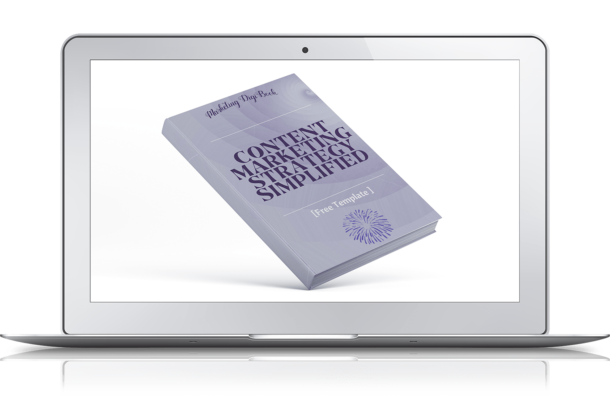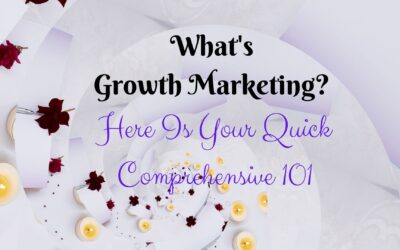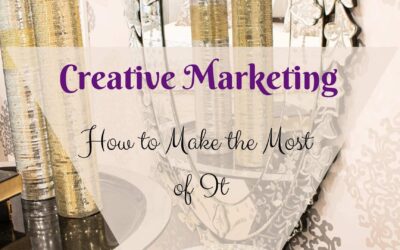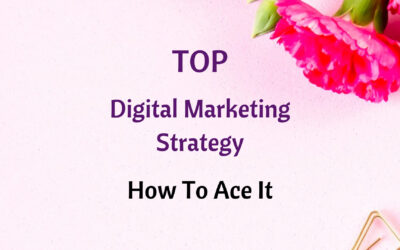Successful companies are always sustained by strong lead-generation strategies and tactics. A booming industry such as Software as a Service (SaaS), expected to reach over $716 billion by 2028, will need the best SaaS lead generation strategies to fuel its staggering growth.
In our informational era, customers have easy access to all the data they need to make informed decisions. Research from Forrester explains that the customer journey is self-directed in a proportion that may vary between 66% and 90%.
Thus, the SaaS lead generation mission is to find the right customer, no matter where it is in its journey, and offer him the right content while educating and demonstrating how your software can help solve his problems. In other words, it has to find the ideal client and convince him to buy your software service/product.
Before establishing which SaaS lead generation strategies are the best for your business, you have to decide on a few fundamental aspects:
Let’s Make Your SEO & Content Work Better for Your Business
Who’s your buyer persona?
For the success of your campaigns, it’s vital to correctly define your perfect market. Who is your ideal client, what’s his business, in which niche, which are his needs, which are his interests, which are his main pain points, which are his buying behavior, etc
SaaS companies usually have more than one buyer persona depending on their product/service offer.
What criteria should a lead meet?
Set scoring parameters to be able to quickly identify the qualified leads and renounce the others that are less lucrative. Concentrating the efforts only on qualified leads saves time and streamlines your lead generation activity.
Each company sets its own criteria considering its offer, goals, and strategies. For example, if your SaaS is dedicated to large companies with international operations, there is no point in contacting a national medium-level business.
Which are your lead generation goals?
Set clear, realistic, and measurable goals for your lead generation campaigns. Since SaaS is a data-driven industry by excellence, it’s obvious that SaaS marketing efforts should be heavily based on data.
Consider KPIs like site traffic, click-through rates, traffic-to-lead ratio, conversion rates, marketing qualified leads (MQLs), sales qualified leads (SQLs), cost per lead, etc. Track your KPIs evolution to know if your strategy brings the desired results or if you need to adjust it.
What tools do you need for lead generation?
B2B SaaS lead generation strategies and SaaS lead generation in general, need several tools for successful implementation and partially automate some tasks. Such tools might be:
- Marketing planning system to manage all marketing campaigns, from content production to ads and promotion.
- Landing page builder to help create pages that elevate the user experience and maximize conversions.
- Software to manage payments – most often subscriptions.
- Email marketing app for lead nurturing.
- Conversion rate optimization app for split test and optimization.
- Live chat software that allows instant interaction with site visitors.
Source: StraightNorth
Best SaaS lead generation strategies as of 2023
Obviously, different strategies will have different results for various businesses. You just have to pick those that bring the best results for your own business, in your particular market and context.
Top Saas lead generation strategy: Put in place a site optimized for conversion and search engines (SEO)
Optimize for search all the pages of your site, landing pages included, for the keywords that you want to rank for in search engines.
Consider optimizing for the keywords used by potential clients when searching for a SaaS company like the one you have. Also, take into consideration the keywords related to the problems that your app solves. Keep in mind that people are looking to solve their problems and are tirelessly looking for the right solutions.
Organic traffic, when the SEO strategy is executed correctly, can be a great source of leads and is by far more cost-effective than paid traffic. It’s an opportunity small SaaS companies still have at their disposal if they don’t have massive advertising budgets to generate traffic.
Conceive your site pages with user experience and conversion in mind. Follow a logical flow, insert catchy call-to-actions, and lead magnets that attract the attention of your audience. And highlight the steps needed for the visitors to take action.
Stay up to date with technical SEO and eliminate conversion barriers
The latest Google algorithm updates pay more attention to parameters like sites’ speed and mobile-friendliness. Thus, they have a heavier impact on search engine rankings.
Ensure that your site has a good loading speed, that’s usually under five seconds on a slow connection (3G) upon Google’s recommendation. Nowadays, users have little patience (under three seconds) with sites that are slow and bounce.
Research from Unbounce reveals that the conversion rate decreases by 12% for each supplementary second that your page needs for loading. Most landing pages do not have an acceptable loading speed. And even if marketers are aware of that, most of them do not treat it as a priority.

Source: Unbounce
With the proliferation of mobile phones and features that allow users to surf the web, having a mobile-friendly site is a must. Thus, your site’s content has to adapt to the dimension of the device used. You can either hire a developer to make your site mobile friendly or upgrade to a theme that adjusts automatically.
Identify the elements that hurt your conversion funnel. Such barriers may be complicated forms, slow pages, onboarding problems, too many steps in the conversion process, UX issues, CTAs that don’t convert, etc.
Choose the right pricing model for your SaaS business
The pricing strategy is of paramount importance to attract leads and clients. Today, most SaaS companies work with monthly price subscription models and have elaborated pricing structures tailored for multiple buyer personas.
Some of the most used pricing strategies by software companies are:
- Tiered pricing strategy – several pricing plans with different price levels considering factors like usage, features, etc.
- Feature-based pricing strategy – usually three types of plans with different prices based on the features included.
- Pricing strategy based on usage – a tiered system with price levels based on usage criteria – for example, number of subscribers, storage space, etc.
- Pay-as-you-grow pricing strategy – a pricing system that considers the business size and provides upgrades as the business evolves.
- Pay-per-user pricing strategy – a pricing model that takes into consideration the number of users needed.
- Freemium pricing strategy – a free plan, usually providing a product/service with basic features and paid add-ons that can be added as needed.
- One-time fee pricing strategy – a fixed fee is paid for the lifetime usage of a product as it is at the moment of purchase without future upgrades.
Each SaaS business will probably test several pricing strategies until identifying the one that works best for it.
Here is an example of a pay-as-you-grow pricing strategy combined with usage. Convertkit proposes three plans, and the price grows with the number of subscribers the client has in his database.
Source: Convertkit
Attract organic traffic via optimized content
For most marketers, content marketing and SEO are two of the most successful lead-generation strategies for software companies. Some may consider them as separate strategies, but the reality is that they deliver the best results when done together.
According to a study made by mikesonders.com on a sample of the 50 most important SaaS businesses in the U.S., organic search is the major source of traffic and leads. It counts for up to 77% of their traffic. And on average it contributes 26.4%.
Source: mikesonders.com
Creating useful content that is relevant to your ideal client and simultaneously optimizing it for search engines, is a winning strategy and a powerhouse for SaaS lead generation. A sort of gold mine.
Content marketing is a long-term game, you have to publish quality content, in a consistent manner to obtain the desired results. Meaning organic traffic and qualified leads for your business.
This is a long-term strategy, it takes time to bring results, but once your content ranks the results will be steady for a long period of time as long as you keep up with the search engine updates.
SaaS content marketing tips
- Create content catered to your customers’ needs and pain points, showing how your software application can work out their problems – they will take the time to research, inform themselves and make informed decisions.
- Valuable and relevant content gains the trust of your audience and the status of an expert in your industry.
- Create videos that present your SaaS product/service and its features.
- Write specific content focused on user intent – what does your visitor want to know?
- Match your buyer’s persona questions and needs in terms of knowledge and information with your business’s goals.
- Craft content for each stage of the buyer journey
,and offer each visitor the information he needs when he needs it. - Format your content for readability and insert visuals to support your text (images, screenshots, infographics).
- Craft case studies to explain how your software helps your clients in a particular case.
- Build lead magnets based on your best content and add interested visitors to your email list.
- Insert clickable pop-ups to attract the visitors’ attention to an action you want them to take.
- Repurpose content to make the most out of your content creation efforts and offer your clients the type of content they expect (i.e., merge a couple of blogs to create an ebook, take a blog and write a script for a video or a podcast).
- Guest-post on prominent sites within your industry, that have similar audiences, to generate leads.
Email marketing is still a powerful tool for lead generation
There are many reasons why email remains a solid B2B SaaS lead generation strategy. For some SaaS businesses, it is even the main channel for gathering leads and moving them down the marketing funnel.
First of all, the email list is a channel owned by the business, it is composed of persons that have shown some interest in your business, content, product/services, etc.
Then, you have the possibility to segment and personalize your emails and enroll potential leads in personalized nurturing sequences. This approach will facilitate massively the sale process.
Put in place lead nurturing sequences
The huge majority of your site visitors are not ready to buy when they end up on your site. They have a certain interest and if they manifest it, it’s your chance to develop the relationship further and demonstrate you are a reliable provider.
Using lead nurturing sequences is a solid strategy to build credibility and convince potential customers about the benefits of your product/service. All this while increasing the conversion rate.
Engage your site visitors with chatbots
Answering instantly to your site’s visitors’ questions can be a great source of valuable leads. And chatbots can execute this task 24h a day.
Installing a chatbot that responds right away can improve your conversion rate and increase the number of signs up to the newsletter, demo sessions, or free accounts.
Organize webinars for your target audience
Webinars offer a great opportunity to interact directly with your audience and answer their questions and concerns in real time. To build relationships and nurture leads that are in a “decision” phase of their journey and showed interest in your software services.
60% of marketers consider webinars a reliable venue to obtain qualified leads. B2B marketing specialists may generate between 500 and 1000 leads per webinar.
What makes webinars a great tool for SaaS lead generation is the possibility to showcase your expertise and gain the trust of your leads while channeling them to conversion. Plus, it can be a great source for content repurposing.
Provide a free trial to prove the value of your software solution
Your software solution is your business’s best ambassador and has the highest impact on attracting new customers.
In the software world offering a free trial is a common SaaS lead generation strategy. And if your app is up to the challenge and delivers what it promises in a demo, it’s a sure way to win new leads.
Put in place a smooth onboarding process and showcase the full power of your soft during the free trial period. Include the premium features to convince your customer to buy. Conceive workflows generated by the user behavior to show how various functionalities work.
These days B2B journey is mostly self-service. Clients will read your content, the reviews of your software, your case studies, will check on your social media channels, and try a demo. And only after that will consider contacting your sales team.
In case you have a high-ticket service that implies knowing more details about your client’s business, you have the option to propose a personalized demo. Walk the client through the app and present it from the point of view of his pain points.
Generate leads via free tools that present interest to your customers
As a SaaS company, you can choose to capture new leads by creating a small tool that you can offer for free and that your clients find useful. A tool that has some connection with your main product/service.
Such a lead generation tool example is HubSpot’s Website Grader. It is a free tool to evaluate the performance of your site, but you have to give your email address in exchange for the results.
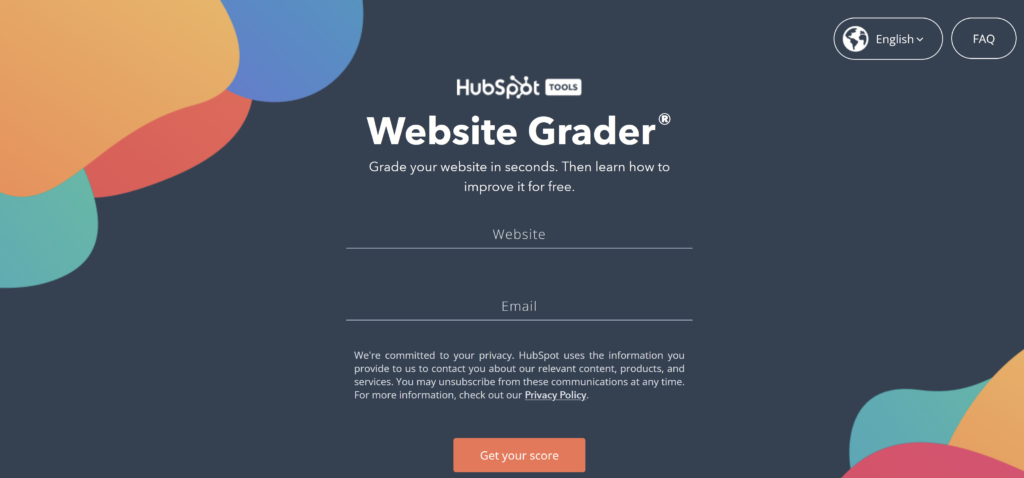
Source: HubSpot
Customized outbound for B2B SaaS
Even if nowadays the inbound strategy prevails when referring to SaaS lead generation strategy, there are cases when outbound strategies still bring the most value. Plus, statistics reveal that 51% of business owners prefer to be contacted by phone by a sales representative, than by other communication venues.
Outbound strategies, meaning reaching clients directly via various channels like LinkedIn, cold calling, and email, are the top lead generation strategies for B2B SaaS companies that have complex, personalized offers and long sales cycles.
For this type of SaaS company, ads are not exactly effective, and inbound might not generate a sustainable flow of leads, as needed. In such cases, using customized outbound brings better results.
Build or hire a SaaS lead generation company, specializing in SaaS, that has deep knowledge regarding the software offer and is able to present it in a personalized way, tailored to the client’s needs. A team able to do proper prospecting according to your buyer persona, identify the ideal potential leads, and set sales appointments.
Customized outbound enables opportunities to build brand awareness, shorten the sales cycles and generate more leads in a cost-effective way.
Profit on online communities to spread the word about your product/service
Another SaaS lead generation strategy that brings interesting results is posting on communities like LinkedIn, Quora, Reddit, etc.
You have to identify the communities where your audience is present, and which are the most common questions and pain points your audience has. And answer them with a detailed response that addresses the respective problem. This way you can insert a link to an article you have on your blog on that topic, and redirect traffic and potential leads to your website.
Pay attention and provide a pertinent answer that solves the issue. And avoid just copy-pasting a link to your website, as the moderators will not approve such answers.
Identify partnerships that can support your SaaS business growth
Build a network of partners to help you spread the word about your SaaS and attract new qualified prospects. You may consider influencer marketing campaigns, guest posting, joint marketing campaigns with complimentary offers, partnerships with review sites (like Capterra, Software Advice, G2, Product Hunt), working with affiliates, etc.
For example, if you have an app that helps build landing pages, you could partner with marketing agencies and marketing experts to recommend your app to their clients. Or you could put in place an affiliate program that rewards with commissions the persons willing to promote your software solution and generate sales.
Building partnerships with SaaS influencers could be a great source of leads. Take into consideration that SaaS influencers don’t look like the typical influencers in other industries. They most likely have large followings on professional avenues like LinkedIn, not on Instagram or TikTok.
Having a recommendation or a feature from a SaaS influencer may generate a huge buzz for your SaaS accompanied by an important number of high-quality leads. A pipeline that will generate results in the long run.
Exploit the power of referrals and make them work for your SaaS
When speaking about generating leads their quality matters more than their quantity. You may gain a plethora of potential leads, but if they don’t buy or buy and renounce your software solution shortly after that, it won’t help.
The best leads are those who generate constant business and became evangelists for your SaaS by recommending it to their connections. Happy clients are your SaaS’s best ambassadors. Thus, the word of mouth remains one of the strongest lead generation tools.
Potential clients will trust more the opinion of their acquaintances or that of your existing clients than any other marketing approach from your business, be it content, ads, demo, etc. Not to mention referrals convert better and quicker because they already trust your business thanks to the recommendation they received.
Establishing a referral program to reward loyal clients and the leads they referred is often a winning strategy.
Leverage on testimonials and reviews
For SaaS companies, having good reviews on comparison or app aggregators like Capterra or AternativeTo can be extremely lucrative. And a great source of reliable B2B leads.
Today SaaS clients know very well what their needs are and what type of solution they want in terms of features and functionality. They do their research, they test various apps, or they already have a solution that they are not happy with.
And they check these aggregator sites that compare features of various apps and allow clients to choose the best fit.
Even if having good reviews on such sites is a powerful source of leads, your marketing team can use them further to gain even more leads and awareness. Use ratings and reviews on other marketing channels like PPC ads, social media posts, case studies, email sequences, or other campaigns.
Take away
There you have it, a condensed list of the best lead generation strategies proven to be successful today.
Though the SaaS industry experiences exponential growth, it is still a highly competitive arena. That’s why SaaS lead generation strategies implemented can be a game-changer for the future of any SaaS business. Choose wisely, test, keep only the strategies that bring you the best results, and reiterate.

